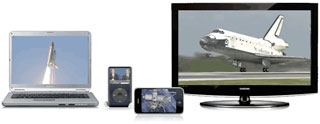PHOTOS: Dawn gets best look yet of asteroid Vesta
BY STEPHEN CLARK
SPACEFLIGHT NOW
Posted: December 22, 2011
NASA's Dawn spacecraft has reached its closest approach to asteroid Vesta and is sending back sharp imagery showing new details of the body's airless, charcoal-colored surface.
Since arriving at Vesta in July, Dawn's ion thrusters have nudged the probe closer to the asteroid, one of the largest objects between the orbits of Mars and Jupiter.
The craft is now at an average distance of 130 miles from Vesta, a position known as the low-altitude mapping orbit. It's the closest Dawn will get to Vesta before backing away in the spring and departing the asteroid in July 2012.
Dawn reached the low-altitude mapping orbit Dec. 12 and returned the first images the next day.
The low-altitude mapping orbit makes possible imagery with three times higher resolution than Dawn's previous position, according to NASA. Dawn's framing camera was developed by the Max Planck Institute for Solar System Research in Germany.
The best resolution of the framing camera from the low-altitude mapping orbit is approximately 75 feet, according to NASA. The imagery is sharp enough to resolve smaller craters, subtle grooves and other surface textures not visible in previous data.
Although the low-altitude mapping orbit affords the best images of Vesta's surface, the primary objectives of this phase of Dawn's mission are to learn about the asteroid's chemical composition and to investigate the interior structure of Vesta by making gravity field measurements.
Plans call for Dawn to remain in the low orbit for about 10 weeks.
When Dawn departs Vesta next summer, it will begin a cruise to Ceres, the largest minor planet in the solar system. Arrival at Ceres is expected in 2015.
Photo credit: NASA/JPL-Caltech/UCLA/MPS/DLR/IDA

NASA's Dawn spacecraft has spiraled closer and closer to the surface of the giant asteroid Vesta. These images were obtained by Dawn's framing camera in the three phases of its campaign since arriving at Vesta in mid-2011, showing the increased resolution of the imager as the probe moved closer to the asteroid.

This image, one of the first obtained by NASA's Dawn spacecraft in its low-altitude mapping orbit, shows part of the rim of a fresh crater on the giant asteroid Vesta. The terrain shown here is located in an area known as the Heavily Cratered Terrain in the northern hemisphere.

This image shows a part of one of the troughs at the equator of the giant asteroid Vesta. In the image, the floor of one of the equatorial troughs appears as the brighter deposit at the bottom of this image, contrasted against the darker band of the trough edge.

This image shows many buried craters located within the equatorial trough region of the giant asteroid Vesta. It is in an area that bears traces of the material thrown out by the impact that created the Rheasilvia basin in the asteroid's south polar region. Also visible are lineated features in a variety of shapes and sizes.
|
|








